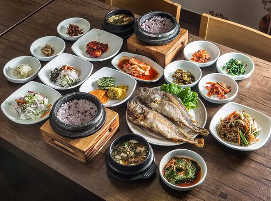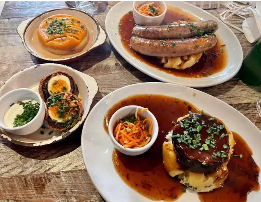On Korean food culture
3 min read
When it comes to Korea, we all have the impression of cosmetics, hipsters and, of course, Korean food. For the Korean food culture, we may not know much, come to South Korea, experience the Korean food culture is a required course. So, do you know the Korean food culture?Next, let’s take a look at Korean food culture.Korean food culture:It is a compulsory course to come to Korea and experience Korean food culture. Those who love Korean dramas will be impressed by the red and white fried rice cake, colorful stone pot bibimbap, Korean bulgogi with meat wrapped in lettuce and Korean soju with green lid and green bottle. Undeniably, these are indeed the most representative symbols of Korean food culture. However, in daily life, there are still many different details in the average roadside restaurant in South Korea.
In general, Korean roadside restaurants are mainly divided into Korean restaurants, Chinese restaurants, Japanese restaurants and American fast food. Chinese restaurants are not uncommon in South Korea. The main dishes are jjajang noodles, seafood noodles and sweet and sour pork. Strangely, except for sweet and sour pork, you can see similar dishes in China. The jjajang noodles in Korean Chinese restaurants have the same name as what we call jjajang noodles in China, but the methods are completely different. There are almost no seafood noodles in China, so many Chinese people will be surprised when they come to Korean Chinese restaurants for the first time. South Koreans love eclipses, mainly udon noodles, sushi and sashimi, which are more expensive compared to Chinese food.
Especially Busan, many Japanese are willing to come here to eat raw fish, because compared to Japan, Busan raw fish processing technology is good and the price is very cheap. When it comes to American fast food, South Korea is mainly divided into three: McDonald’s, KFC and Lotte, because Lotte is the local fast food in South Korea, the popularity is as good as McDonald’s and KFC, and the taste is good. In addition, Korean pizza is very popular. In addition to international brands such as Pizza Hut, there are many local brands of pizza in South Korea, such as Mister’s Pizza, Domino’s and Blacksmith’s, which are also very good in workmanship and taste.
For Korean restaurants, some Chinese friends come to South Korea will have such an experience: it is so different from the TV drama, some people exaggerate that in South Korea can cook a dish can open a restaurant. Many Korean roadside eateries don’t have menus, they are posted on the wall, and many make only one or two, such as pork Soup restaurant, Samgyetang restaurant and Bibimbap restaurant. Unlike in China, where even the smallest restaurant can have many choices, Korean barbecue restaurants are characterized by “completeness” while Korean restaurants are characterized by “specialization”. But don’t worry, even if you order a bowl of instant noodles (called ramen in Korea and it’s part of the menu), you won’t be left with a single bowl of instant noodles when all the dishes are served, because you’ll always have a companion. With the meal, popular speaking is small dishes, these small dishes are free, not enough to add, mainly to bubble spicy cabbage, sweet radish, style and quantity of each hotel is not the same.
Korean tableware comes with stainless steel chopsticks and spoons on each table. The chopsticks are flat, unlike in China and Japan. If there are hand wipes before the meal, they are generally taken out of the refrigerator all year round and never warmed. Koreans do not have the habit of drinking hot water, so the water provided is always cold. If you need hot water, you need to ask the waiter. Korean dishes are mainly steamed, baked and fried, very light, almost no oil. In addition, another great feature is that many Korean restaurants here do not have high chairs and high tables, so you have to sit on the floor with a low table when dining.






